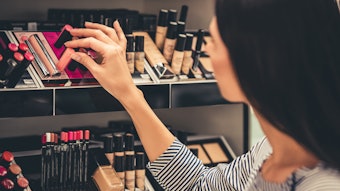As children return to school and memories of summer vacations fade, a new nationwide online survey conducted by Harris Interactive on behalf of the Personal Care Products Council (PCPC) shows that many Americans around the country are uninformed about sun protection, regardless of the season. They also are unaware of the risks of sun exposure and who is at risk for sun damage. In fact, 90% of skin aging is caused by everyday sun exposure that occurs throughout the year, not just at the beach.
“The American public is still not in a place where they are sun smart every time they step out of their door,” said Farah K. Ahmed, chair of the PCPC's sunscreen committee.
Nearly 2/5 (38%) of Americans say sunscreen is mainly for use on a sunny day. However, according to the American Academy of Dermatology (AAD), even on cloudy days, up to 80% of the sun’s harmful UV rays can penetrate your skin and cause damage. Because UV rays can be reflected off of water, sand, snow and concrete, the risk of sunburn can be high even if you are in the shade or when skiing on a cold, winter day.
Americans are unaware of the damage everyday sun exposure causes. Two in five (40%) say the main risk of sun exposure is sunburn, and 45% think skin aging is mostly related to a person’s genetics. However, extensive research demonstrates that it’s everyday sun exposure that contributes heavily toward:
- wrinkles
- fine lines
- sagging skin
- dull skin
- dehydrated skin
- age spots
In addition, sun exposure also contributes to:
- pre-cancerous (actinic keratosis) and cancerous (basal cell carcinoma, squamous cell carcinoma and melanoma) skin lesions, caused by loss of the skin's immune function
- benign tumors
- telangiectasias, the dilation of small blood vessels under the skin
One-third (33%) of Americans believe the darker a person’s skin, the less susceptible they are to sun damage. According to the Centers for Disease Control and Prevention (CDC), everyone’s skin is damaged by UV exposure, but those with lighter skin types are more at risk for developing skin cancer.
“Unfortunately, the American public still has a long way to go before we treat sunscreen the way we treat seatbelts,” said Ahmed. “Every time you step out of your door, you should automatically apply sunscreen—rain or shine, summer or winter—as well as wear protective clothing and seek shade whenever possible.”
According to the AAD and the Skin Cancer Foundation, some of the best ways to protect yourself from UV damage are to:
- Seek shade when appropriate. The sun’s rays are strongest between 10 am and 2 pm. If your shadow appears to be shorter than you are, seek shade.
- Wear protective clothing, such as a long-sleeved shirt, pants, a wide-brimmed hat, and sunglasses.
- Generously apply a broad-spectrum, water-resistant sunscreen with a sun protection factor (SPF) of 30 or more to all exposed skin. “Broad-spectrum” provides protection from both ultraviolet A (UVA) and ultraviolet B (UVB) rays.
- Use extra caution near water, snow and sand because they reflect and intensify the damaging rays of the sun, which can increase your chances of sunburn.
- Avoid tanning beds. Ultraviolet light from the sun and tanning beds can cause skin cancer and wrinkling. If you want to look tan, consider using a self-tanning product or spray, but continue to use sunscreen with it.
“Our goal is to help consumers make informed decisions, and use sunscreen as part of a daily safe sun regimen. Sunscreen is a crucial step in the fight against premature skin aging, sunburn and skin cancer,” said Ahmed. “Today, consumers can find sunscreen protection in a variety of products labeled with SPF, such as daily facial moisturizers, foundations, lipsticks, powders, etc. Our hope is that sun protection will become as much of a habit as putting on your seatbelt."










